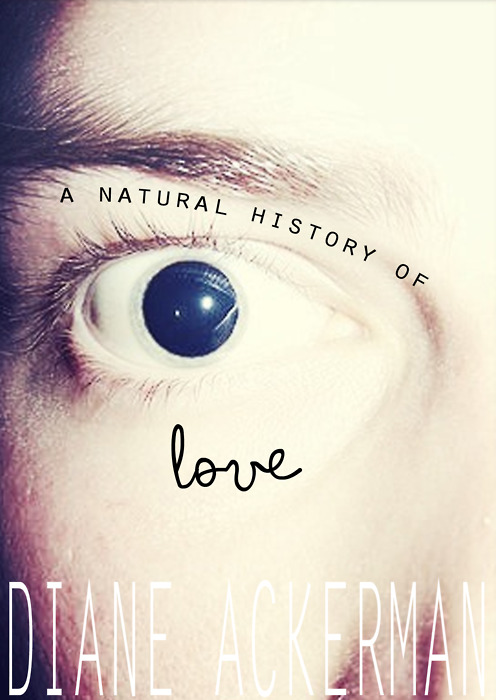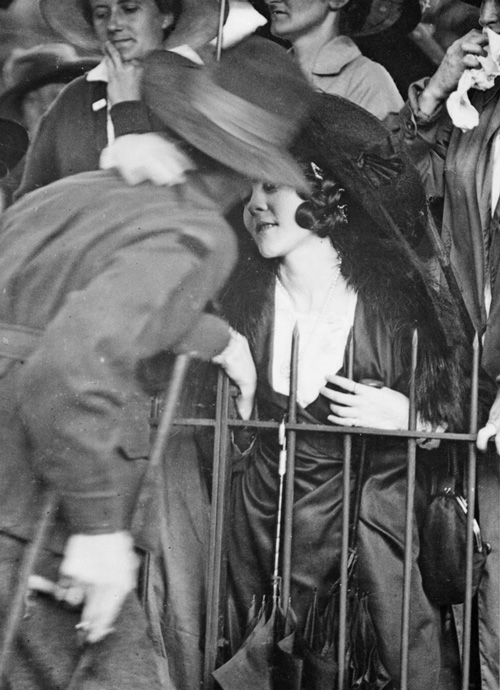“A one-syllable word heavy as a heartbeat … a sort of traffic accident of the heart.”
 “You can never know anyone as completely as you want. But that’s okay, love is better,” a wise woman wrote. But what, exactly, is love? Literary history has given us a wealth of beautiful definitions, mathematicians have calculated its odds, and psychologists have dissected its mechanisms. Love has been hacked, illustrated, coached, and reimagined. And yet the heart’s supreme potential remains ever-elusive.
“You can never know anyone as completely as you want. But that’s okay, love is better,” a wise woman wrote. But what, exactly, is love? Literary history has given us a wealth of beautiful definitions, mathematicians have calculated its odds, and psychologists have dissected its mechanisms. Love has been hacked, illustrated, coached, and reimagined. And yet the heart’s supreme potential remains ever-elusive.Written nearly two decades ago, A Natural History Of Love (public library) by prolific science historian Diane Ackerman, Carl Sagan’s favorite cosmic poet, endures as one of the most dimensional explorations of humanity’s highest emotion. Ackerman begins with a meditation on love’s many faces, inescapable power, and ineffable nature:
Love is the great intangible. In our nightmares, we can create beasts out of pure emotion. Hate stalks the streets with dripping fangs, fear flies down narrow alleyways on leather wings, and jealousy spins sticky webs across the sky. In daydreams, we can maneuver with poise, foiling an opponent, scoring high on fields of glory while crowds cheer, cutting fast to the heart of an adventure. But what dream state is love? Frantic and serene, vigilant and calm, wrung-out and fortified, explosive and sedate — love commands a vast army of moods. Hoping for victory, limping from the latest skirmish, lovers enter the arena once again. Sitting still, we are as daring as gladiators.
[…]
Love is the white light of emotion. It includes many feelings which, out of laziness and confusion, we crowd into one simple word. Art is the prism that sets them free, then follows the gyrations of one or a few. When art separates this thick tangle of feelings, love bares its bones. But it cannot be measured or mapped. Everyone admits that love is wonderful and necessary, yet no one can agree on what it is.

Even the very etymology of love shies away from explaining how, when, and why we imbued love with such immense significance:
What a small word we use for an idea so immense and powerful it has altered the flow of history, calmed monsters, kindled works of art, cheered the forlorn, turned tough guys to mush, consoled the enslaved, driven strong women mad, glorified the humble, fueled national scandals, bankrupted robber barons, and made mincemeat of kings. How can love’s spaciousness be conveyed in the narrow confines of one syllable? If we search for the source of the word, we find a history vague and confusing, stretching back to the Sanskrit lubhyati (“he desires”). I’m sure the etymology rambles back much farther than that, to a one-syllable word heavy as a heartbeat. Love is an ancient delirium, a desire older than civilization, with taproots stretching deep into dark and mysterious days.

Our long history of ambivalence towards love, Ackerman argues, is rooted in the necessary vulnerability and uncontrolled surrender true love requires:
We think of it as a sort of traffic accident of the heart. It is an emotion that scares us more than cruelty, more than violence, more than hatred. We allow ourselves to be foiled by the vagueness of the word. After all, love requires the utmost vulnerability. We equip someone with freshly sharpened knives; strip naked; then invite him to stand close. What could be scarier?Still, uncomfortable as it may be, love is also inescapable and subject to our own imagination in redefining it:
Common as child birth, love seems rare nonetheless, always catches one by surprise, and cannot be taught. Each child rediscovers it, each couple redefines it, each parent reinvents it. People search for love as if it were a city lost beneath the desert dunes, where pleasure is the law, the streets are lined with brocade cushions, and the sun never sets.

Ackerman offers an important disclaimer on how we think about the history of love, which is in effect a universal reflection on all of history and something we too often forget — the idea that everything builds on what came before:
It’s tempting to think of love as a progression, from ignorance toward the refined light of reason, but that would be a mistake. The history of love is not a ladder we climb rung by rung leaving previous rungs below. Human history is not a journey across a landscape, in the course of which we leave one town behind as we approach another. Nomads constantly on the move, we carry everything with us, all we possess. We carry the seeds and nails and remembered hardships of everywhere we have lived, the beliefs and hurts and bones of every ancestor. Our baggage is heavy. We can’t bear to part with anything that ever made us human. The way we love in the twentieth century is as much an accumulation of past sentiments as a response to modern life.

Much like the study of psychology, which has a long history of treating pathology by bringing our emotions from the negative to the neutral and only a nascent interest in the kind of “positive psychology” that elevates us above the neutral, Ackerman points out that the science of love has been largely confined to examining the negative — and yet, that misses the most rewarding marvels of all:
After all, there are countless studies on war, hate, crime, prejudice, and so on. Social scientists prefer to study negative behaviors and emotions. Perhaps, they don’t feel as comfortable studying love per se. I add that “per se” because they are studying love — often they’re studying what happens when love is deficient, thwarted, warped, or absent. … We have the great fortune to live on a planet abounding with humans, plants, and animals; and I often marvel at the strange tasks evolution sets them. Of all the errands life seems to be running, of all the mysteries that enchant us, love is my favorite.A Natural History Of Love goes on to explore such intoxicatingly fascinating subjects as why love evolved, how culture and customs shape its expressions, what makes erotic and nonerotic love different, and much more. It comes as a fantastic addition to these essential books on the psychology of love.

No comments:
Post a Comment